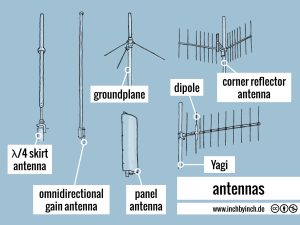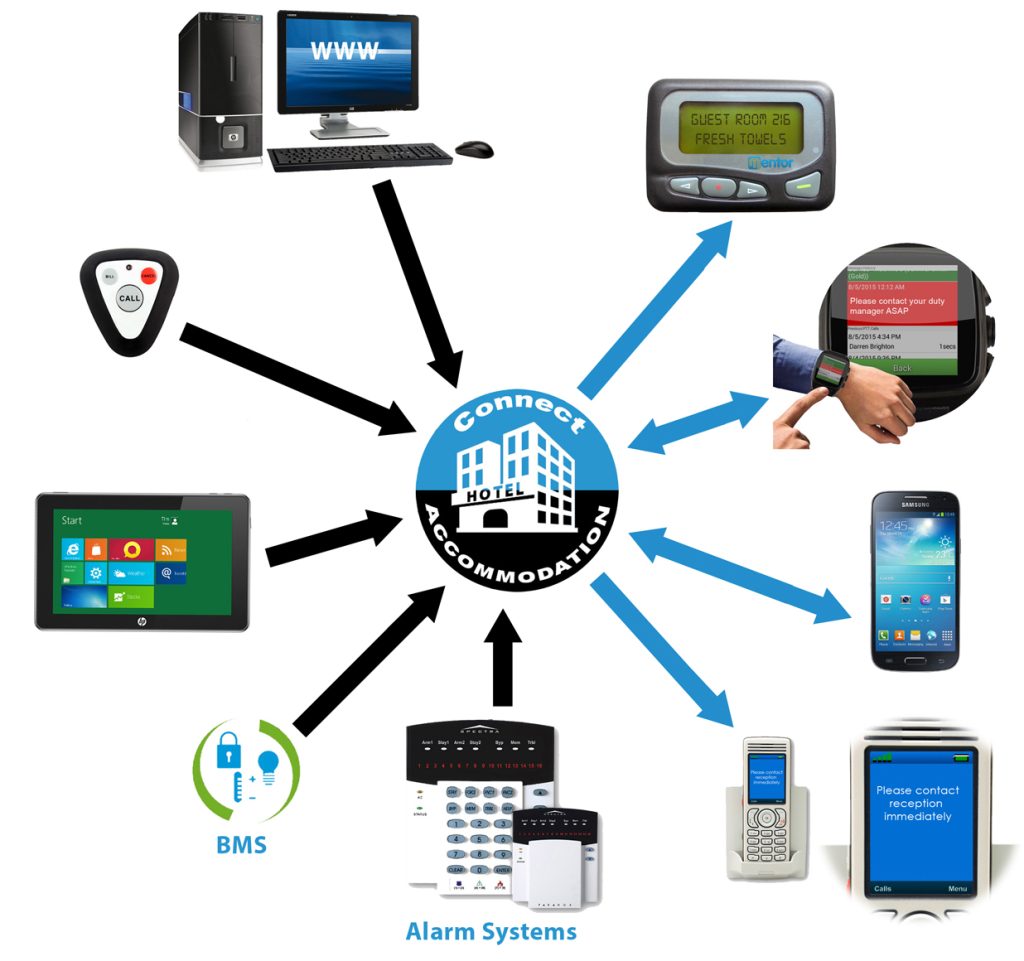Wireless communication systems rely heavily on diversity techniques to ensure optimal performance and reliability. These methods are crucial in mitigating the effects of interference, fading, and other signal impairments that threaten network functionality. Antenna diversity is one such technique that leverages multiple antennas at either end of a transmission to improve signal quality.

But the story doesn’t stop there – there are several types of antenna diversity techniques employed in wireless communication systems today. Frequency diversity involves transmitting data over different frequencies simultaneously, while space diversity uses multiple antennas placed strategically across various locations for superior signal reception from a single transmitter. Both frequency and space options have their own advantages and disadvantages.
That’s not all! Enter MIMO technology; this innovative approach utilizes spatial diversity by using multiple antennas both at the transmitter and receiver ends to transmit data more efficiently than ever before. But wait, there’s still another method called time-diversity; it improves system performance by sending redundant copies of data over time so that any lost or corrupted information can be recovered later on during transmission.
In conclusion, understanding diverse techniques like frequency, space antenna options along with MIMO technology provides an edge in optimizing overall system performance within wireless communication networks. The inclusion of time-diversity methods further enhances reliability under challenging conditions like multipath fading or interference from nearby devices when implemented into a given system setup correctly for optimal results every step of the way!
Types of Antenna Diversity Techniques and Their Benefits
Contents
- 1 Types of Antenna Diversity Techniques and Their Benefits
- 2 Space Diversity: Which Technique is Better?
- 3 Exploring MIMO Systems and Spatial Diversity Techniques
- 4 Time Diversity in Wireless Communication: How Does it Improve Performance?
- 5 Receive Diversity Techniques: What’s the Difference?
- 6 The Role of Antenna Configuration in Improving Data Rate and Capacity
- 7 Comparison of Different Diversity Techniques for Improving Wireless Communication System Performance
The intricacies of wireless communication systems can be perplexing, but fear not! Antenna diversity techniques are here to save the day. With a variety of methods available, such as frequency diversity and space diversity, the performance of these systems can be vastly improved.

Frequency diversity is like a secret weapon against fading due to multipath interference in mobile environments. By transmitting over multiple frequencies simultaneously, it’s less likely that all channels will experience fading at once. This technique also packs an extra punch by increasing bandwidth for greater data rates and capacity.
Meanwhile, space diversity takes a different approach by using multiple antennas in various locations to provide pattern and gain diversity. This helps tackle issues caused by obstructions or reflections that could cause signal interference or fading. However, this technique requires careful antenna placement and configuration for maximum effectiveness.
In conclusion, both frequency and space diversities are powerful tools that optimize wireless communication systems’ reliability while mitigating environmental effects like multipath interference or obstructions – truly bursting with benefits!
Space Diversity: Which Technique is Better?
The intricacies of wireless communication systems demand an acute attention to detail, and diversity techniques happen to be a critical aspect for improving performance. Space diversity stands out as one such technique that harnesses the power of multiple antennas placed at various locations. By leveraging the fact that signals may undergo different paths and fading effects, this antenna diversity technique can significantly enhance signal quality while simultaneously reducing errors in a wireless system.
Intriguingly, there are two primary types of space diversity techniques: horizontal and vertical. Horizontal space diversity takes advantage of using antennas positioned at varied horizontal angles, while vertical space diversity depends on antennas stationed at diverse heights or elevations. Depending on specific environments and applications, both types exhibit their own unique benefits.
Comparatively speaking, when juxtaposed with other kinds of antenna-based methods like frequency or time-based techniques – space diversity has demonstrated superior performance results concerning data rate and capacity. Interestingly enough, MIMO (multiple-input-multiple-output) systems depend on spatial diversities via multiple antennas located at both ends- transmitter and receiver alike! Ultimately though, exploiting spatial diversities through various antenna configurations proves to be an effective way to augment wireless communication system performance!
Exploring MIMO Systems and Spatial Diversity Techniques
The perplexing and bursty nature of MIMO (Multiple-Input Multiple-Output) is a spatial diversity technique that incorporates multiple antennas at both the transmitter and receiver ends to enhance system performance. This strategy optimizes available resources by transmitting various data streams concurrently over a single frequency channel, improving signal quality in environments with fading channels. The benefits of MIMO are manifold but one key advantage is its ability to combat multipath fading, which results from signals emanating from different paths arriving out-of-phase and interfering with each other. MIMO seizes these reflections, utilizing them to create independent signal paths that boost overall system reliability.
Moreover, this technique increases capacity by allowing for more users to transmit data on the same channel without interference. Although several types of antenna diversity techniques exist such as frequency diversity and space diversity, what sets MIMO apart is its remarkable efficiency in using multiple antennas for both transmission and reception operations. By skillfully manipulating all accessible resources while tackling challenges like multipath fading through spatial processing techniques, MIMO exponentially enhances wireless communication system performance compared to traditional single-antenna systems.
Time Diversity in Wireless Communication: How Does it Improve Performance?
The perplexing world of wireless communication performance is fraught with diverse techniques, and time diversity stands out as one that has burst onto the scene. This technique entails transmitting the same signal multiple times over a period of time while each transmission follows a slightly different path through the wireless channel. The aim is to correct any errors or interference that may occur during one transmission by subsequent transmissions.
To implement this enigmatic concept in a wireless system, you need some form of buffering capability at both ends- transmitter and receiver. This allows for multiple copies of the same signal to be stored and processed before being combined into a single output. Furthermore, it may require specialized hardware or software algorithms to manage timing and synchronization between successive transmissions.
Compared to other types of antenna diversity techniques such as frequency or space diversity, time diversity offers an element of surprise with its unique advantages. For instance, it doesn’t need additional antennas or complex beamforming configurations like space diversity does. It also provides improved resistance against fading caused by polarization effects or changes in gain patterns over time that can impact frequency-diverse systems.
As such, time-diverse systems have become quite popular in mobile LTE networks where high data rates and reliable connections are critical for maintaining quality-of-service requirements for users on-the-go.
Receive Diversity Techniques: What’s the Difference?
Wireless communication systems rely heavily on receive diversity techniques, a complex and intricate set of technologies designed to enhance the reliability and performance of transmissions. These techniques employ multiple antennas with varying configurations to improve signal quality, increase bandwidth, and data rate. One such technique is polarization diversity which utilizes two antennas with perpendicular polarizations.
MIMO (multiple-input-multiple-output) systems are another example that leverage spatial diversity techniques by utilizing multiple antennas at both ends of transmission paths. This ingenious approach creates independent channels that enable more efficient use of available wave resources leading to increased bandwidth and data rates.
Pattern diversity is also employed in wireless communication systems as an alternative approach that uses different radiation patterns from various antenna types. By comparing received signals from these diverse patterns, receivers can select the best quality for transmission while reducing interference from external sources.
In conclusion, engineers must utilize robust receive diversity techniques such as polarization diversity, MIMO systems or pattern-based approaches when designing wireless networks capable of meeting today’s demanding connectivity needs. With limited bandwidth availability or challenging environments where external interference may occur – reliable transmissions can be achieved via implementation of these advanced technologies ensuring optimal system performance every time!
The Role of Antenna Configuration in Improving Data Rate and Capacity
The intricate and perplexing world of wireless communication systems is heavily influenced by the configuration of antennas. The implementation of multiple antennas, also known as MIMO (Multiple Input Multiple Output), has emerged as a popular strategy to achieve higher data rates. By employing this method, identical data can be transmitted across different spatial paths or carriers simultaneously.
The concept of “diversity” often arises in discussions surrounding antenna systems with multiple channels. Diversity enables the utilization of uncorrelated fading between various propagation paths, which effectively combats large scale fading effects caused by environmental factors. Through diversity techniques such as space-time coding or beamforming, signal quality can be improved and overall capacity increased.
However, implementing a multi-antenna system presents an abundance of challenges that must be addressed. For example, each antenna must be strategically positioned at an optimal distance from one another to avoid interference while still maintaining coherence between them. Furthermore, precise calibration and synchronization are crucial for achieving optimal performance levels. Despite these obstacles that may arise when striving for enhanced wireless communication capabilities without sacrificing reliability or range capabilities; it’s worth considering the benefits yielded by utilizing multiple antennas in your system design approach!
Comparison of Different Diversity Techniques for Improving Wireless Communication System Performance
The enigmatic and elusive benefits of diversity techniques in wireless communication systems lie in their ability to transmit data across a variety of resources. When one resource fails or experiences poor signal conditions, another can seamlessly take over without any interruption. Diverse antenna techniques utilize multiple copies of the same data sent across different polarizations or paths, ultimately boosting capacity and reducing costs.
Frequency and space diversity are two commonly used antenna diversity techniques. Frequency diversity involves transmitting the same information at various frequencies while space diversity employs multiple antennas situated at diverse locations to transmit signals to a receiver. While both methods have their own advantages, frequency diversity is often preferred for its remarkable handling capabilities against multipath fading.
MIMO (multiple-input-multiple-output) systems are yet another spatial diversity technique that uses separate antennas for transmitting and receiving data. By utilizing these distinct channels, MIMO can notably enhance overall system capacity and performance compared to other forms of diversities based on time or space. However, implementing MIMO calls for careful evaluation of factors such as antenna configuration and channel estimation accuracy in order to achieve optimal results – adding more perplexity to an already intricate concept!


